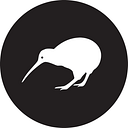New Zealand sailors at sharp end of multi-million dollar drug bust

Two Royal New Zealand Navy (RNZN) sailors were at the sharp end of last week’s multi-million dollar heroin bust in the Indian Ocean, transporting the team that boarded the drug trafficking vessel and the cache of narcotics that were seized.
Leading Seaman Combat Specialists (LSCS) Hayden Newport, from Havelock North in Hawke’s Bay, and Dillon Dolman-Tuhou, from Gisborne, are boat coxswains on board the Royal Australian Navy frigate HMAS Arunta.
Working on a tip-off from a Royal New Zealand Air Force (RNZAF) P-3K2 Orion surveillance aircraft, the Australian frigate intercepted a suspect vessel in the Indian Ocean on 10 May. Both the RNZAF Orion and the Arunta work as part of the Combined Maritime Forces, a 31-nation naval partnership that promotes maritime security and seeks to defeat terrorism and prevent piracy and the trafficking of people and drugs across about 8.2 million square kilometres of international waters.
During the operation, the New Zealand sailors drove Arunta’s two Rigid Hull Inflatable Boats which transported the team that boarded the suspect vessel off the coast of Africa.
“We monitored the suspect vessel and the actions of her crew, to ensure that they didn’t throw out anything, while keeping a close eye on our boarding team,” LSCS Dolman-Tuhou said.
Once the search was completed, the New Zealand sailors helped transfer about 250 kilograms of heroin that were seized to Arunta, where it was destroyed.
“It’s great having our two Kiwi sailors on board for this deployment. They’re doing a good job and it keeps the Anzac tradition going in a very positive way,” said Commander Cameron Steil, Arunta’s Commanding Officer.
The pair were both posted to Arunta in August 2016, for a 12-month exchange. Coincidentally, they joined the RNZN on the same day in February 2012.
“The posting to Arunta and the work that we do, such as assisting in the boarding of vessels that are trafficking narcotics and other illegal cargo, are exactly what I envisioned I’d be doing when I enlisted,” said LSCS Dolman-Tuhou.
“The camaraderie is another big thing I like about my job. The variety of tasks and opportunities also keeps it interesting. One day you may be driving boats, the next day you may be shooting weapons and the next day you could be helping in a Pacific Islands country that had been struck by a cyclone.”
LSCS Newport said their posting on board the Arunta was a great opportunity to enhance their skills in an operational environment.
“The tasks vary every day, which keeps my mind active and prevents things from becoming routine. The travel opportunities have also been great. Being paid to see the world was a huge selling point for me when I decided to join the Navy,” LSCS Newport said.
